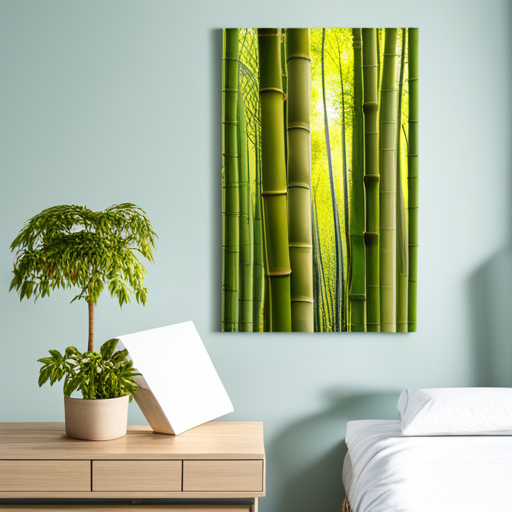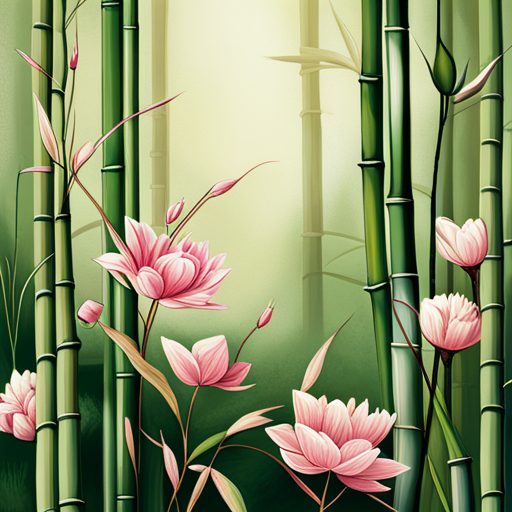Bamboo flowers, although inconspicuous, possess a unique and captivating beauty that often goes unnoticed. These flowers, found in shades of white or pale green, lack any noticeable fragrance, making them easily overlooked.
Blooming only once every few decades, bamboo flowers are a rare and extraordinary sight. Surprisingly, each bamboo stalk can produce an astonishing number of flowers, with some plants bearing up to 100,000 blossoms. The colors of the flowers can vary, ranging from pristine white to delicate pink or even vibrant red.
Notably, the blossoming of bamboo flowers signifies the end of the plant’s life cycle. However, bamboo fruits, consumed by animals like pandas, are highly nutritious and edible. Dried bamboo flowers can be used for decorative purposes or ground into a tea powder.
Thriving in bright, indirect light and moist soil, bamboo flowers are best observed between late June and early September. Noteworthy locations to witness the beauty of bamboo flowers include the Aokigahara forest in Japan and bamboo forests in China.
Contents
Our Highlighted Points
- Bamboo flowers are small and often barely noticeable.
- Bamboo flowers are usually white or pale green and do not have a scent.
- Bamboo flowers only bloom once every 30-60 years.
– Bamboo flowers can be white, pink, or red.
What are Bamboo Flowers?

Bamboo flowers are small, usually white or pale green, and often barely noticeable, blooming only once every 30-60 years as a sign that the plant is reaching the end of its life cycle. Despite their unassuming appearance, bamboo flowers play a crucial role in ecosystems.
The flowers produce fruits that are eaten by animals like pandas, providing a vital food source. Additionally, the flowers contain seeds that are dispersed by animals or water, facilitating the reproduction and spread of bamboo plants.
Moreover, bamboo flowers have various uses. They can be dried and used as decoration or ground into a powder for tea. Bamboo is also an excellent source of biomass and can be harvested without harming the environment.
Overall, bamboo flowers may be inconspicuous, but they hold significant ecological importance and have practical applications in human activities.
Characteristics and Appearance

The appearance of bamboo flowers can vary in color, with white, pink, or red being common options. Bamboo flowers are small and often barely noticeable, but they play a crucial role in the plant’s life cycle.
Here are some key characteristics of bamboo flowers:
- Structure: Bamboo flowers consist of both male and female reproductive organs, arranged in clusters called inflorescences. These inflorescences are usually cylindrical or spike-like in shape and can grow up to several inches long.
- Blooming process: Bamboo flowers only bloom once every 30-60 years, making it a rare and remarkable event. When a bamboo plant reaches the end of its life cycle, it produces flowers as a final reproductive effort. After flowering, the plant’s energy is redirected towards fruit production, which is eaten by animals or dispersed by wind or water.
3. Significance: Bamboo flowers are not only visually appealing but also serve as a vital part of the ecosystem. They provide food for animals like pandas and contribute to the plant’s regeneration and survival. Additionally, dried bamboo flowers can be used as decorations or ground into a powder for tea, showcasing their versatility and cultural significance.
Life Cycle and Blooming

The life cycle of bamboo plants is characterized by a rare and remarkable blooming event that occurs once every 30-60 years. During this blooming period, bamboo flowers emerge, marking the end of the plant’s life cycle. The flowers are small and often barely noticeable, with colors ranging from white to pink or red. Bamboo flowers have both male and female reproductive organs and are wind-pollinated. After the flowers are pollinated, the plant produces fruits that contain seeds. These fruits are consumed by animals or dispersed by water, contributing to the plant’s reproductive cycle. Once the blooming and fruiting process is complete, the bamboo plant dies. This unique life cycle of bamboo has significant environmental impacts, as bamboo is an excellent source of biomass and can be harvested without harming the environment.
| Life Cycle Stages | Environmental Impact |
|---|---|
| Blooming |
– Contributes to biodiversity
– Produces highly nutritious fruit
- Can be used as a renewable energy source |
| Fruiting |
– Supports animal populations through food availability
- Enhances ecosystem resilience |
| Plant Death |
– Releases nutrients back into the ecosystem
- Creates space for new bamboo growth and succession |
Table: The life cycle stages of bamboo and their environmental impacts.
How Can Bamboo Flowers Enhance the Health of Gardens?
Bamboo flowers can be a versatile solution for gardens as they add a touch of elegance and create a vibrant focal point in any outdoor space. Not only do they enhance the aesthetic appeal, but bamboo flowers also contribute to the health of gardens by attracting beneficial insects and wildlife, promoting biodiversity.
Frequently Asked Questions
How long does it take for bamboo flowers to bloom?
The blooming time of bamboo flowers is influenced by various factors, including the species of bamboo, environmental conditions, and genetic factors. Pollination plays a crucial role in the blooming process, as bamboo flowers are wind-pollinated.
Can bamboo flowers be grown indoors?
Growing bamboo indoors as a houseplant has several benefits, such as adding a touch of nature to indoor spaces and improving air quality. To successfully grow bamboo indoors, provide bright indirect light, water regularly, avoid wetting the leaves, and fertilize every two weeks with a half-strength all-purpose fertilizer.
Are there any specific care requirements for bamboo flowers?
Specific care requirements for bamboo flowers include regular watering with moist, but not soggy, soil, fertilizing every two weeks with a half-strength all-purpose fertilizer, providing bright indirect light, and creating a cool dark environment to encourage blooming.
Can bamboo flowers be used in culinary recipes?
Bamboo flowers can be used in culinary recipes to add unique flavors to dishes. Different cultures incorporate bamboo flowers into their cuisines, showcasing their versatility and taste profiles.
Are there any traditional or cultural significance associated with bamboo flowers?
Traditional ceremonies, symbolism, and rituals associated with bamboo flowers vary across different cultures. In some Asian countries, bamboo flowers are revered for their beauty and resilience, and they are often used as symbols of good luck, prosperity, and purity in cultural festivals and ceremonies.

